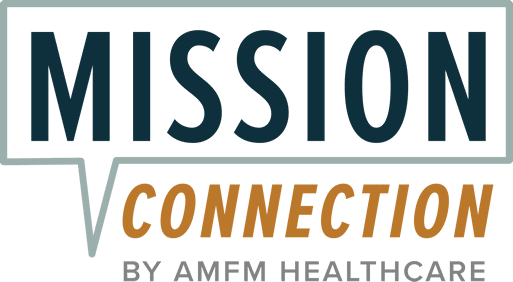Bulimia Nervosa: Bulimia Symptoms, Impacts on Mental Health, & Treatment Options

Bulimia nervosa (BN) is one of the eating disorders recognized in the Diagnostic and Statistical Manual of Mental Disorders, Fifth Edition (DSM-5).1
0.3% of adults in the US struggle with bulimia each year, with lifetime prevalence reaching around 1%. As with the majority of other eating disorders, women are disproportionately affected, with 1.5%-2.0% of this population experiencing bulimia at some point in their lives. However, males can also struggle with bulimia, as it affects 0.5%-0.7% of men.2
If regular binging and purging cycles, as well as self-worth that’s tied to body image, are affecting your life, you don’t – and shouldn’t – have to cope alone. Bulimia nervosa can damage both your physical and mental health, and, on occasion, can be life-threatening. Therefore, professional support is strongly advised for long-term successful recovery.
On this page, we take you through everything you need to know about bulimia nervosa, including:
- What bulimia nervosa is
- The symptoms of bulimia
- Bulimia risk factors and causes
- Complications of bulimia nervosa
- How bulimia is tied to mental health
- How a diagnosis of bulimia is made
- Treatment options for bulimia nervosa

What Is Bulimia Nervosa?
Bulimia nervosa is a patterned eating disorder in which someone repeatedly eats an objectively large amount of food while feeling a loss of control (a binge). After a binge, this person then uses unsafe behaviors to avoid weight gain (called “compensatory behaviors”).
Let’s break this pattern down further: A binge means eating, in discrete periods (for example, within two hours), an amount of food that is definitely larger than what most people would eat in the same situation.
After this binge, an affected person tries to “undo” their actions through risky behaviors like:
- Self-induced vomiting
- Misuse of laxatives (medicines that stimulate bowel movement) or diuretics (medicines that make you urinate)
- Prolonged fasting
- Excessive exercise
These binge-eating episodes and compensatory behaviors occur, on average, at least once a week for three months.1
Another defining feature of bulimia is the way self-worth becomes tied almost entirely to body weight and shape. Therefore, it causes someone to experience a state of dissatisfaction with themself and drives many of their choices.
Clearly, bulimia can be highly damaging to someone’s mental and physical state, making recognizing bulimia symptoms an important first step in recovery. We cover these next.
Bulimia Symptoms
Symptoms of BN fall into two broad categories: what happens physically to the body and what shows up in a person’s thoughts, moods, and actions.3 Below, we’ve broken these symptoms into their categories to help increase understanding.
Each group comes with its own set of defining symptoms; however, there can be quite an overlap. The following sections cover the symptoms of each type of eating disorder in turn.
Physical Symptoms of Bulimia
Bulimia can take a measurable toll on the body, even if weight appears “normal.” For example, common physical symptoms include:
- Swollen salivary glands in the cheeks that give a puffy look around the jawline
- Dental cavities caused by repeated stomach acid exposure from vomiting
- Long-term sore throat
- Electrolyte imbalances (low potassium, sodium, and chloride), which can cause muscle weakness and irregular heartbeat
- Bloating, abdominal pain, constipation, or diarrhea from laxative misuse
- Scars on the back of the hand (Russell’s sign) from repeated contact with teeth while inducing vomiting4
- Irregular or absent menstrual periods
- Fatigue and dizziness
- Swelling in hands and feet from fluid retention after cycles of purging and dehydration
Emotional and Behavioral Symptoms
Emotional and behavioral symptoms of bulimia nervosa include:
- Preoccupation with weight and body shape to a degree that dominates daily life
- Secretive behaviors around food, such as hiding food, eating alone, or disappearing to the bathroom right after meals
- Rigid eating patterns, like eating only at specific times or cutting food into tiny pieces
- Frequent trips to the bathroom after meals to vomit
- Excessive exercise
- Frequent mood swings between anxiety, shame, and guilt
- Low self-esteem
- Avoiding friends, family meals, or situations where eating is observed
- Use of substances to control appetite or mood3
Bulimia Risk Factors and Causes
Bulimia nervosa doesn’t appear out of thin air. It develops from a mix of biological, psychological, and social influences that pile up over time until the binge-purge cycle starts.
On the biological side, research suggests that people with a family history of other eating disorders and mood disorders are more vulnerable to developing bulimia. There is also a higher rate of bulimia in identical twins compared to fraternal twins.5
Dysregulation in neurotransmitters like serotonin and dopamine has also been linked to bulimia. When brain chemicals are out of balance, cravings, mood swings, and impulse control can go haywire, contributing to symptoms.
Additionally, people who set impossibly high standards for themselves are more likely to fall into the binge-purge cycle. Low self-esteem and chronic dissatisfaction with body image may also lead to eating disorders.
Finally, growing up in a culture or family that puts heavy emphasis on thinness, dieting, or “clean eating” increases the likelihood of developing bulimia. Exposure to weight-based teasing during childhood and adolescence is also a significant risk factor.6
Complications of Bulimia Nervosa
The most serious complications of bulimia nervosa stem from electrolyte imbalances.
For example, potassium is vital for proper heart function. When levels drop due to purging, the risk of irregular heart rhythms (arrhythmias) and sudden cardiac arrest increases. What makes this even more dangerous is that people can look well while their cardiac system is under severe strain.
Repeated vomiting can also cause injury to the esophagus. Sometimes, small tears lead to bleeding and vomiting of blood. In very rare but severe cases, the food pipe can tear completely, which is life-threatening and needs surgery right away.7
Misusing laxatives can also cause long-lasting damage to the intestines, severe dehydration, and may make it hard for the bowels to work normally again.
Further, people with bulimia also have much higher rates of depression and anxiety. Therefore, their risk of suicidal thoughts or attempts may be significantly increased.
The following section takes a closer look at the link between mental health and bulimia to help raise awareness of the impact of this condition.
Mental Health and Bulimia
75% of people with bulimia have also dealt with some form of mood disorder, and major depression affects 63% of these people. Anxiety disorders also show up in 36% of bulimia cases.8
Further, when someone feels stuck in the binge-purge cycle, this can fuel suicidal ideation. Sadly, a long-term study of adolescents found that symptoms of bulimia predicted serious suicidal thinking a year later.9
Another study found that women with a history of trauma were significantly more likely to develop bulimia. Plus, this trauma was also tied to higher rates of depression and post-traumatic stress disorder.10
People with BN may initially feel like bingeing is an escape from stress or sadness, and purging “undoes” the damage. But right after, guilt and shame typically flood in. Over time, this cycle creates a rollercoaster of highs and lows similar to addictive patterns.
Also, the stigma around eating disorders can make many people attempt to keep their bulimia symptoms a secret. Hiding symptoms can lead to isolation and hopelessness – both strong predictors of worsening eating disorder symptoms and depressive episodes.
How Is a Diagnosis of Bulimia Made?
To confirm a diagnosis of bulimia, your healthcare provider will likely take you through the following steps.
First, they may ask you questions about your eating habits: how often binge episodes happen, what triggers them, and whether there’s a feeling of losing control during those times. They’ll also likely ask you if you do anything to “make up” for eating, such as vomiting, using laxatives, fasting, or exercising too much.
Next, you’ll need a physical check-up, including weight, heart rate, blood pressure, and temperature measurements. Any visible signs associated with bulimia, such as dental erosion from stomach acid, swollen salivary glands, or scars on the hands, are also taken into account.
You may also need blood and urine tests. These tests are used to assess your electrolyte status, such as low potassium or sodium levels, which can affect your heart. They also check how well your kidneys and liver are working, your blood sugar levels, and how hydrated you are.
Since bulimia goes hand in hand with depression and anxiety, a mental health professional may give you questionnaires or structured interviews to understand your thought patterns. You may also be asked about substance use or suicidal thoughts.
Treatment Options for Bulimia Nervosa
Bulimia is treated through a combination of medical and psychotherapeutic approaches. Sometimes, outpatient treatment is enough to help someone toward recovery. However, in severe cases, immediate hospitalization is needed.
The following are some of the recommended treatment options for bulimia.
Each group comes with its own set of defining symptoms; however, there can be quite an overlap. The following sections cover the symptoms of each type of eating disorder in turn.
Psychotherapy
Psychotherapy is the first-line treatment for bulimia nervosa. It is most commonly delivered through enhanced cognitive-behavioral therapy (CBT-E).
CBT-E is a structured, time-limited therapy with roughly 20 sessions across four to six months. It targets the mechanisms that maintain bulimia, such as strict dieting and dietary rules, the binge-guilt-purge cycle, and the over-valuation of weight and shape.
Practical work in therapy includes establishing a regular eating pattern, breaking binge triggers, testing and changing beliefs about food and body shape, and building relapse-prevention skills.11
Interpersonal psychotherapy (IPT) is an alternative form of psychotherapy for relationship problems and life transitions (like grief, role disputes, and life changes) that can feed into eating disorders. IPT may take longer than CBT to show benefits, but long-term follow-ups show it can reach similar recovery levels as CBT over time.12
Dialectical behavior therapy (DBT) can be useful when emotion-regulation and impulsivity are major drivers of bingeing. Evidence shows DBT-style programs help people with bulimia when emotional dysregulation or self-harm risk is present.13
Family-based treatment (FBT) or the “Maudsley approach” is the evidence-based choice for treating bulimia in adolescents.14 It mobilizes parents to supervise eating, re-establish normal meal patterns, and gradually return control to the teen.
Nutritional Counseling
A registered dietitian or nutrition specialist is typically included in the management plan of a person with BN. These professionals take a detailed food history and work with you to design a structured meal plan.
Nutritional counseling also tackles misconceptions about food and weight. People with bulimia, for example, often believe that carbs are “bad,” or that skipping meals is the only way to control weight. Dietitians challenge these myths with science-backed information.
A nutrition professional also teaches how to restore electrolyte balance through food and hydration. Plus, they monitor for nutritional deficiencies, like low iron or vitamin D, which are common after years of chaotic eating patterns.
Medications
The only FDA-approved medication specifically for bulimia is the antidepressant fluoxetine (brand name Prozac).15 It has been shown to reduce bingeing and purging behaviors, even in people who aren’t depressed. The standard effective dose is 60 mg per day, higher than what’s prescribed for depression.
Some other medications have shown promise in clinical trials, though they’re not FDA-approved for bulimia. For instance, topiramate, an anticonvulsant, may reduce binge frequency and promote weight stabilization, but it comes with side effects.16
Hospitalization and Intensive Care
Most people with bulimia are treated as outpatients, but sometimes the illness becomes so severe and complicated that hospitalization is necessary.
Inpatient care focuses on medical stabilization first, for example, replacing electrolytes through IV fluids. Your heart rhythm is also monitored continuously. Once stable, the care team shifts to structured nutrition and intensive psychotherapy, typically delivered several times per day.
Those who can not commit to full hospitalization can get into partial hospitalization programs (PHPs) or intensive outpatient programs (IOPs). These settings provide daily or near-daily therapy, meal support, and close monitoring, but let you return home at night.
Mission Connection: Professional Support for Mental Health
Finding your way out of bulimia can be overwhelming, but recovery is absolutely possible with the right support.
At Mission Connection Healthcare, we do not directly treat eating disorders. But our licensed mental health professionals specialize in the issues that often fuel them, like anxiety, depression, and trauma.
We design treatment plans that fit your life, such as outpatient therapy, partial hospitalization, inpatient care, or secure online sessions. Our team also aims to understand your story through a brief assessment and can match you with a therapist who’s the best fit for your needs. Call us today or get started online.

References
- Substance Abuse and Mental Health Services Administration. (2016, June 1). Table 20, DSM-IV to DSM-5 bulimia nervosa comparison. National Center for Biotechnology Information. https://www.ncbi.nlm.nih.gov/books/NBK519712/table/ch3.t16/
- National Institute of Mental Health. (2024). Eating disorders. U.S. Department of Health & Human Services. https://www.nimh.nih.gov/health/statistics/eating-disorders?utm_source=chatgpt.com
- Jain, A., & Yilanli, M. (2021). Bulimia nervosa. PubMed. https://pubmed.ncbi.nlm.nih.gov/32965849/
- Daluiski, A., Rahbar, B., & Meals, R. A. (1997). Russell’s sign: Subtle hand changes in patients with bulimia nervosa. Clinical Orthopaedics and Related Research, (343), 107–109. https://pubmed.ncbi.nlm.nih.gov/9345215/
- Barakat, S., McLean, S. A., Bryant, E., et al. (2023). Risk factors for eating disorders: Findings from a rapid review. Journal of Eating Disorders, 11(1), 1–31. https://doi.org/10.1186/s40337-022-00717-4
- Puhl, R. M., Wall, M. M., Chen, C., Bryn Austin, S., Eisenberg, M. E., & Neumark-Sztainer, D. (2017). Experiences of weight teasing in adolescence and weight-related outcomes in adulthood: A 15-year longitudinal study. Preventive Medicine, 100, 173–179. https://doi.org/10.1016/j.ypmed.2017.04.023
- Nitsch, A., Dlugosz, H., Gibson, D., & Mehler, P. S. (2021). Medical complications of bulimia nervosa. Cleveland Clinic Journal of Medicine, 88(6), 333–343. https://doi.org/10.3949/ccjm.88a.20168
- Rushing, J. M., Jones, L. E., & Carney, C. P. (2003). Bulimia nervosa: A primary care review. Primary Care Companion to the Journal of Clinical Psychiatry, 5(5), 217–224. https://doi.org/10.4088/pcc.v05n0505
- Perkins, N. M., & Brausch, A. M. (2019). Body dissatisfaction and symptoms of bulimia nervosa prospectively predict suicide ideation in adolescents. International Journal of Eating Disorders, 52(8), 941–949. https://doi.org/10.1002/eat.23116
- Groth, T., Hilsenroth, M., Boccio, D., & Gold, J. (2019). Relationship between trauma history and eating disorders in adolescents. Journal of Child & Adolescent Trauma, 13(4). https://doi.org/10.1007/s40653-019-00275-z
- Knott, S., Woodward, D., Hoefkens, A., & Limbert, C. (2014). Cognitive behaviour therapy for bulimia nervosa and eating disorders not otherwise specified: Translation from randomized controlled trial to a clinical setting. Behavioural and Cognitive Psychotherapy, 43(6), 641–654. https://doi.org/10.1017/s1352465814000393
- Miniati, M., Callari, A., Maglio, A., & Calugi, S. (2018). Interpersonal psychotherapy for eating disorders: Current perspectives. Psychology Research and Behavior Management, 11, 353–369. https://doi.org/10.2147/prbm.s120584
- Rozakou-Soumalia, N., Dârvariu, Ş., & Sjögren, J. M. (2021). Dialectical behaviour therapy improves emotion dysregulation mainly in binge eating disorder and bulimia nervosa: A systematic review and meta-analysis. Journal of Personalized Medicine, 11(9), 931. https://doi.org/10.3390/jpm11090931
- Kass, A. E., Kolko, R. P., & Wilfley, D. E. (2013). Psychological treatments for eating disorders. Current Opinion in Psychiatry, 26(6), 549–555. https://doi.org/10.1097/yco.0b013e328365a30e
- Bello, N. T., & Yeomans, B. L. (2017). Safety of pharmacotherapy options for bulimia nervosa and binge eating disorder. Expert Opinion on Drug Safety, 17(1), 17–23. https://doi.org/10.1080/14740338.2018.1395854
- Costandache, G. I., Munteanu, O., Salaru, A., Oroian, B., & Cozmin, M. (2023). An overview of the treatment of eating disorders in adults and adolescents: Pharmacology and psychotherapy. Advances in Psychiatry and Neurology, 32(1), 40–48. https://doi.org/10.5114/ppn.2023.127237





